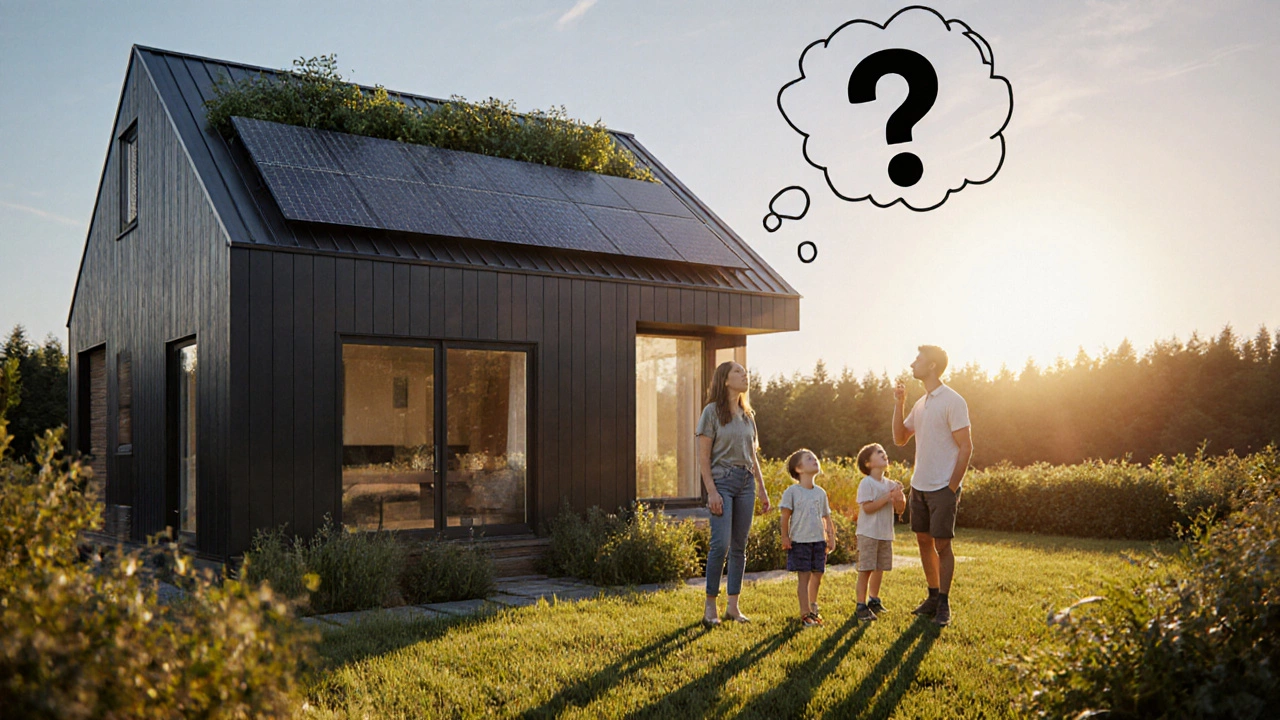Eco‑Friendly House Cost: How Much Do Green Homes Really Cost?
When planning a eco‑friendly house cost, the total expense of designing and constructing a home that minimizes environmental impact. Also known as green home cost, it includes everything from land purchase to finished interiors. Understanding this figure helps you decide whether a sustainable build fits your budget or if you need to scale back.
One key player in the cost equation is green building, the practice of using eco‑friendly materials, energy‑saving techniques, and low‑impact construction methods. Green building raises upfront spending for things like high‑performance insulation or recyclable timber, but it also lowers operating bills over the years. The link between green building and eco‑friendly house cost is clear: better materials often mean higher initial outlay, yet the long‑term savings can offset that.
Key Factors That Drive Eco‑Friendly House Prices
First, look at a cheap eco‑friendly house, a low‑budget green home that still meets sustainability standards. Budget‑friendly options rely on locally sourced timber, simple rectangular footprints, and modest square footage. By keeping the design simple, you cut both material costs and labor hours. For example, a 1,200‑sq‑ft cottage built with reclaimed bricks and a timber frame can cost 15% less than a conventional build of the same size.
Next, passive solar design, a strategy that uses building orientation, window placement, and thermal mass to capture and store solar heat can shave a big chunk off heating bills. Incorporating south‑facing windows, insulated shutters, and a concrete slab for heat storage adds a modest amount to construction costs—usually under £5,000 for a typical UK home—but dramatically reduces the need for active heating systems. That means the initial eco‑friendly house cost rises a bit, while long‑term expenses drop.
Renewable energy systems, such as solar PV panels or small wind turbines, are another major cost driver. Installing a 4‑kW solar array might cost £6,000‑£8,000 upfront, yet the electricity you generate can offset grid usage for 10‑15 years, pulling down the overall cost of living in a green home. In this way, renewable energy, energy generated from natural, replenishing sources like sunlight or wind directly influences the eco‑friendly house cost by balancing higher capital outlay with lower utility bills.
Water management deserves a mention too. Low‑flow fixtures, rainwater harvesting tanks, and grey‑water recycling systems add £1,000‑£3,000 to construction but can cut water bills by up to 40%. When budgeting for a sustainable build, factor in these water‑saving features as part of the overall cost picture.
Finally, consider size‑efficient alternatives like tiny houses, compact, often mobile dwellings that use minimal resources and energy. A well‑insulated tiny house of 200‑sq‑ft can be built for under £30,000, offering a dramatically lower eco‑friendly house cost than a traditional property. Tiny houses also tend to incorporate passive solar design and renewable energy by default, further compressing the cost curve.
All of these factors—material choices, design strategies, renewable power, and water systems—interlock to shape the final price tag on a green home. By breaking down each component, you can see exactly where your money goes and where you can save.
Below you’ll find a curated set of articles that dive deeper into each of these topics, from detailed cost guides for glamping cabins to step‑by‑step instructions on building a cheap eco‑friendly house. Use them to fine‑tune your budget, compare regional price differences, and discover practical tips that keep your eco‑friendly house cost as low as possible while still delivering a comfortable, sustainable lifestyle.
Eco-Friendly House Costs: How Expensive Are Green Homes?
Discover how much eco‑friendly houses cost, why they’re pricier, and how savings, incentives, and smart choices can make green homes affordable.
- Oct, 19 2025
- 0 Comments
